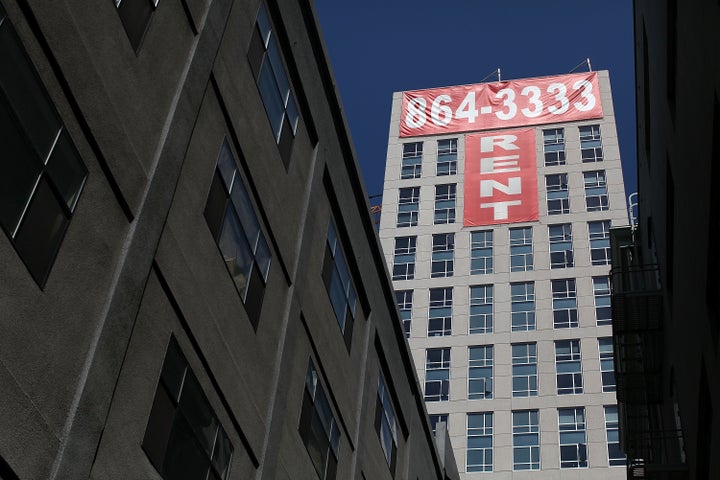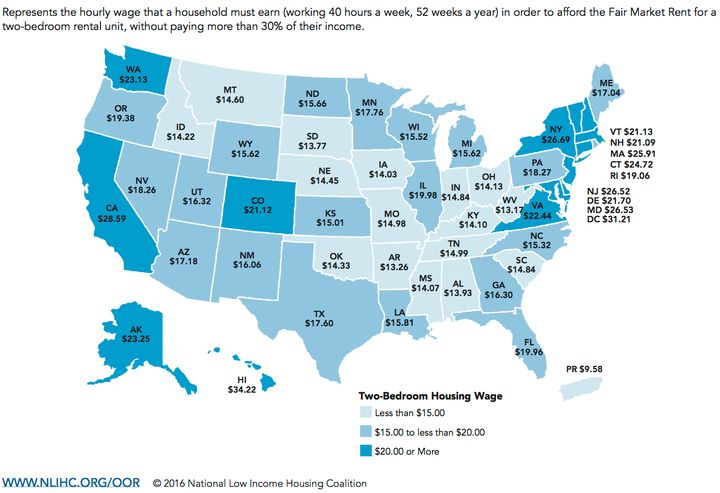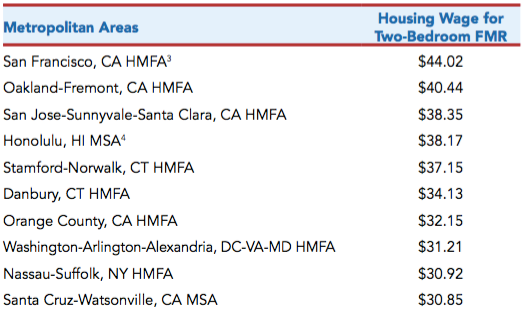
Housing costs are out of whack with incomes across the country, making the task of finding an affordable place to live a real struggle, even for many full-time workers.
A report titled “Out of Reach,” out this week from the National Low Income Housing Coalition, highlights the mismatch between wages and housing costs at the state, county and metro levels. The results are consistently dire: in no locality in the country can people who earn the federal minimum wage afford the typical two-bedroom apartment.
The NLIHC determined how much a person working full-time would need to make to comfortably afford fair market rent. They call that the housing wage, or the hourly wage needed so only 30 percent of a person's income goes toward rent. Households spending more are considered “cost-burdened” -- and the extra expense means they cut spending on food, health care and retirement savings.
Nationwide, the housing wage for a two-bedroom apartment is $20.30 hourly (or $42,240 annually). That means someone earning the federal minimum wage of $7.25 would have to work 112 hours a week to afford the typical rent.
“If this worker slept for eight hours per night, he or she would have no remaining time during the week for anything other than working and sleeping,” the report notes.
Here’s how much a worker would need to earn to afford rent on a two-bedroom apartment in each state:

The “Out of Reach” report determined rent prices in each location using U.S. Department of Housing and Urban Development estimates of the fair market rent (including utilities) in each area for rental units. HUD uses two-bedroom units for its standard estimates because they are most common and most reliable to survey, the report states.
The housing wage required to afford a two-bedroom rental is over $30 an hour in the most expensive metro areas. Half of the top ten are in California, where a growing housing crisis has contributed to skyrocketing rents.

The San Francisco metro area's extreme housing costs seem slightly more reasonable, considering typical renters there make far more than the national average.
But in neighboring Oakland, there’s a much wider gap. To afford the fair market rate of $2,100 for a two-bedroom apartment, a person would need to make over $84,000 per year, more than double the actual income of the average Oakland renter. And that still might not be enough -- professionals like teachers and firefighters are being priced out of the city, and officials have considered ways to help fund more housing for families making around $100,000.
Renting has increased dramatically in the last decade, with nine million more new renter households today than in 2005. But supply, as well as government spending on affordable housing, hasn’t kept up, resulting in rising rents and extra strain for low-income families.
“Between 2003 and 2013, the number of low cost units renting for less than $400 increased by 10 percent, but the number of renter households in need of these units increased by 40 percent,” the report states. The authors say the new data underscores the need to both raise the minimum wage and increase federal funding for affordable housing.
Housing is a basic need the government should invest in, HUD Secretary Julián Castro wrote in an introduction to the NLIHC report.
“Our nation can’t fulfill any of our major goals -- whether it’s tackling inequality, improving healthcare, keeping neighborhoods safe, or making sure every child gets a good education -- unless we also focus on housing,” Castro said.
_____
Kate Abbey-Lambertz covers sustainable cities, housing and inequality. Tips? Feedback? Send an email or follow her on Twitter.
Related stories:
- Million-Dollar Homes Are Taking Over These U.S. Cities At An Alarming Pace
- How Sky-High Rents Are Radically Changing New York’s Neighborhoods
- The Cities Where A Six-Figure Income Is Barely Enough To Get By
- New York City Just Took A Huge Step To Tackle Obscenely High Rents
- How The Eviction Epidemic Is Trapping Black Women In Poverty
- Housing Programs Are So Strapped For Cash That Millions of Families Can’t Even Get On Wait Lists
- Renters Are Mostly Screwed, But Here’s One City That’s Actually Affordable

